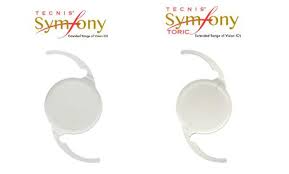 Medicare and a majority of health insurance plans usually cover most of the cataract surgery along with a standard cataract lens.This will give you the clear vision that cataracts have obstructed. But if you needed glasses for distance or reading before cataract surgery, it is likely that you will still need them afterwards, because some vision disorders are not related to the lens – they are the result of irregularities of the cornea.
Medicare and a majority of health insurance plans usually cover most of the cataract surgery along with a standard cataract lens.This will give you the clear vision that cataracts have obstructed. But if you needed glasses for distance or reading before cataract surgery, it is likely that you will still need them afterwards, because some vision disorders are not related to the lens – they are the result of irregularities of the cornea.
In our evaluation consultation, we may recommend LASIK vision correction along with cataract surgery to correct refractive error such as nearsightedness or farsightedness resulting from the shape of the cornea.
IOL stands for intraocular lens, and it’s a medical device that replaces the lens of your eye after it’s removed during cataract surgery. There are many different types of IOLs approved by the FDA and the right one for you depends on a number of factors.
If your goal after cataract surgery is to have excellent vision without glasses or contacts, Rochester Eye and Laser Center offers Advanced Multifocal or Accommodating IOLs, for a continuous range of vision correction well into your future. These Advanced IOLs provide correction for both near and distance vision and everything in between.
It is important to precisely measure the focusing power of a new lens to your vision goals, so Dr. Lindahl will work closely with you to determine the best Advanced IOL option for you.
Advanced lenses are not covered by Medicare and are available for an additional charge, up to $2,500 per eye. Discuss costs and payment options with our staff when you have your evaluation.
Here are a few types of IOLs to consider:
Monofocal
If you don't mind wearing glasses after cataract surgery for correction at any distance, near or far, then a conventional monofocal IOL is for you. A conventional monofocal IOL is set to focus at one fixed distance. Traditional cataract surgery covers this lens, although it is subject to deductibles and co-insurance. You will likely need glasses 100% of the time for intermediate/near activities and may need them for distance, depending on the amount of astigmatism you may have.
Astigmatism Correcting
If you would like to reduce an existing astigmatism with cataract surgery and have the goal is to reduce my need to wear glasses for any distance, then the toric (astigmatism-correcting) lens may be right for you. You will still need glasses for tasks requiring near and intermediate vision.
The eye’s natural lens isn’t spherical like a typical monofocal IOL. An astigmatism correcting IOL most closely matches the eye’s shape, reducing the chance of developing minor optical imperfections that may result from using a spherical lens.
A toric IOL corrects for astigmatism by allowing for different powers in different meridians of the lens. Dr. Lindahl can mark your cornea indicating the most curved part of the cornea. Once the toric IOL is in place, he can align the markings on the cornea with the markings on the IOL to make sure the astigmatism is corrected. With astigmatism corrected, the need for distance glasses is markedly reduced.This means that the lens will allow for sharper vision, especially when lighting isn’t ideal. Again with this option, glasses may be needed for both near and intermediate.
Advanced Lens Cataract Surgery
If your goal is to reduce your dependency on glasses for all ranges of vision (distance, intermediate and near), then an advanced multifocal lens may be for you. You may still need glasses for certain tasks in low light, and/or very fine work.
Accommodating
Accommodating IOLs are aspheric lenses with flexible supporting legs called haptics that hold the lens in place. These flexible legs allow the patient to focus more easily when engaging in tasks like reading or using the computer, thus reducing the need for contacts or glasses after surgery.
Multifocal
Multifocal IOLs have been shown to provide both near and distance vision, they are also prone to cause some glare and halos at night. Multifocal IOLs achieve better near vision with the addition of extra magnification in certain parts of the lens. As a result, multifocal IOLs markedly reduce your need to use glasses for activities like reading or using a computer.
Multifocal lenses are also available with a toric option to treat astigmatism.
Ask Dr. Lindahl about the new PanOptix Trifocal IOL-the first and only FDA-approved trifocal lens delivers an exceptional combination of near, intermediate and distance vision, substantially reducing your need for glasses.
As you can see, premium IOLs like aspheric, toric, accommodating, and multifocal offer a number of benefits over standard monofocal IOLs. It’s important to note that some lenses aren’t covered by Medicare. If this is a concern for you, be sure and do your research before choosing an IOL. You can speak to our Cataract Specialist to learn more at 585-342-7985.
Schedule your appointment at the Rochester Eye & Laser Center, where you will meet with Dr. Ken Lindahl, the #1 Femto Laser Bladeless Cataract Surgeon in the Rochester area, for a comprehensive exam and discuss which IOL option will work best to optimize your vision outcome.
Visit our Cataract FAQ page for more information on IOLs.

Take our free online cataract assessment to see if you may need to have your eyes checked for cataracts soon.

If this article was of interest, you may also like:
Cataract Surgery: Blade vs. Blade-free?


 The Rochester Eye & Laser Team
The Rochester Eye & Laser Team

 Medicare and a majority of health insurance plans usually cover most of the cataract surgery along with a standard cataract lens.This will give you the clear vision that cataracts have obstructed. But if you needed glasses for distance or reading before cataract surgery, it is likely that you will still need them afterwards,
Medicare and a majority of health insurance plans usually cover most of the cataract surgery along with a standard cataract lens.This will give you the clear vision that cataracts have obstructed. But if you needed glasses for distance or reading before cataract surgery, it is likely that you will still need them afterwards, 



